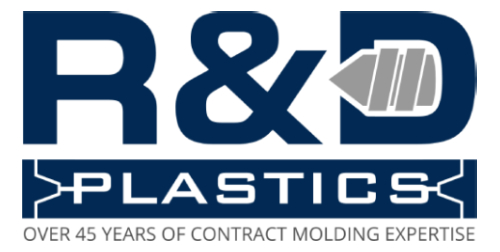Large Tonnage Injection Molding: Powering the Production of Big, Durable Plastic Parts
Created at : Nov 17, 2025
Size and precision often go hand in hand. From the automotive industry to heavy equipment manufacturing, the demand for large, complex, and durable plastic components continues to grow. Meeting that demand requires specialized equipment and expertise — and that’s where large tonnage injection molding comes into play.
Large tonnage injection molding involves using machines with exceptionally high clamping forces — often ranging from 500 tons to well over 6,000 tons. These powerful presses are designed to produce large or thick-walled parts that smaller machines simply cannot handle. By combining high pressure, precision tooling, and advanced material control, manufacturers can produce big, high-quality plastic parts in a single, efficient molding cycle.
What Is Large Tonnage Injection Molding?
Injection molding, at its core, is a process that involves heating thermoplastic resin until it becomes molten, injecting it into a steel mold, and then cooling it to form a solid part. The term tonnage refers to the clamping force used by the molding machine to keep the mold closed during injection. This is a critical factor because the molten plastic inside the mold is injected under tremendous pressure — and if the mold isn’t held tightly enough, it can separate, causing flash (excess plastic), part defects, or even equipment damage.
Large tonnage machines are specifically engineered to deliver this massive clamping force, allowing manufacturers to mold large parts or multi-cavity molds that produce several big parts at once. These machines often stand several stories tall and require reinforced flooring, heavy-duty cranes, and specialized operators — a testament to the scale and power of the process.
Where It’s Used
Large tonnage injection molding is used across industries that require durable, precision-engineered plastic components. Common applications include:
- Automotive and Transportation: From bumpers and dashboards to grilles, fenders, and interior panels, large molding machines help produce vehicle components that are both lightweight and structurally strong.
- Appliances and Consumer Goods: Major appliance manufacturers rely on large presses to produce housings, doors, and internal components for items like washing machines, refrigerators, and air conditioners.
- Industrial and Agricultural Equipment: Heavy-duty machinery often includes custom plastic parts that replace metal components for improved corrosion resistance and weight reduction.
- Construction and Infrastructure: Products like panels, conduit fittings, and large enclosures can be made efficiently through large tonnage molding.
- Material Handling: Pallets, bins, containers, and storage systems are often molded using high-tonnage machines for strength and consistency.
The versatility of this process makes it a cornerstone of modern manufacturing, offering a balance between performance, cost, and scalability.
The Advantages of Large Tonnage Injection Molding
1. Production of Large, Single-Piece Parts
Instead of producing multiple small components that must be assembled later, large tonnage molding allows manufacturers to create big, seamless parts in one shot. This not only saves time but also reduces the potential for weak points or assembly errors.
2. Precision and Consistency
Even at massive scales, this process maintains tight tolerances and surface uniformity. Automated controls and modern monitoring systems ensure consistent quality from the first part to the last.
3. Cost Efficiency at Scale
Although the initial investment in tooling and equipment can be significant, the long-term cost efficiency is exceptional. Once the mold is made, large runs of parts can be produced with minimal waste and consistent results.
4. Material Flexibility
Large tonnage machines can process a wide range of thermoplastic materials — from lightweight polypropylene (PP) to engineering-grade resins like ABS, nylon, and polycarbonate. This flexibility enables manufacturers to tailor the performance of the part to its specific end use.
5. Strength and Durability
Parts produced with this process exhibit superior structural integrity, making them ideal for applications that demand strength, impact resistance, and long-term durability.
Engineering Precision Meets Industrial Power
The success of large tonnage injection molding depends on more than just machine size. It requires expert mold design, precise temperature control, and advanced process engineering. Every stage of production — from part design and material selection to mold manufacturing and process setup — plays a critical role in achieving the desired results.
Modern molding facilities often integrate robotic automation and real-time monitoring systems to ensure efficiency and accuracy. These systems track temperature, pressure, cooling rates, and material flow to fine-tune every cycle for maximum output and minimal waste.
Challenges and Considerations
While the advantages are significant, large tonnage injection molding comes with unique challenges. The molds themselves are massive — sometimes weighing tens of thousands of pounds — and require special handling equipment. Cycle times can be longer due to the amount of material and cooling required. Additionally, the facility must be designed to accommodate the weight and power requirements of these large machines.
However, for companies that specialize in this type of production, these challenges are well worth overcoming. The ability to produce high-quality, large-scale plastic parts efficiently gives manufacturers a competitive edge in industries where size, strength, and precision matter most.
A Future of Bigger, Better, Smarter Molding
As technology continues to evolve, so does large tonnage injection molding. New innovations in mold design, material science, and automation are making it possible to produce even larger, more complex parts with less energy and greater accuracy. Sustainability is also driving improvements, with many facilities adopting energy-efficient servo-hydraulic systems and recycled material processes to reduce environmental impact.
Large tonnage injection molding is more than just a manufacturing process — it’s a combination of engineering excellence and mechanical power. It enables companies to bring bold ideas to life, transforming raw plastic resin into the durable components that keep industries moving.
In summary, large tonnage injection molding represents the intersection of scale, strength, and sophistication. Whether creating heavy-duty industrial parts, vehicle components, or consumer products, it’s the process that ensures every large part is made with precision, consistency, and durability — one powerful cycle at a time.
